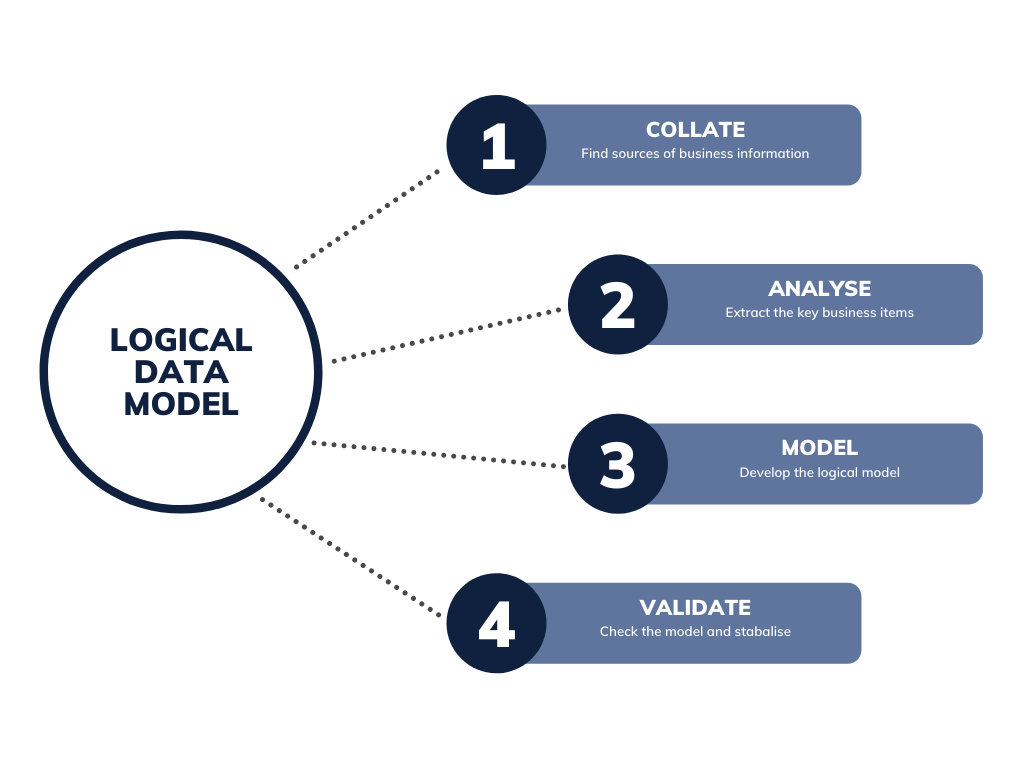Developing a logical data model

The power of a logical data model is immeasurable but if you don’t have one, how do you start to create one? Lets help guide you….
Starting from scratch to develop an enterprise logical data model can seem a daunting task but like every problem, you should first try and break this down into manageable chunks and have a process to tackle each chunk which will not only add structure to the problem but also allow you to measure progress.
Break down the problem
We like to look at the logical data model at three levels of granularity:
- Level 0 – the highest level of granularity that is useful to help break down the logical data model into a dozen or so chunks showing the key relationships between each
- Level 1 – showing all of the logical entities and key relationships within each chunk that offers a lot of detail by showing all of the entities and relationships but not the attributes
- Level 2 – shows all of the details including entities, relationships and attributes
If you first create a level 0 diagram then you can focus on a particular chunk at a time.
Following a process
Now we have broken down the problem, into manageable chinks, we can now begin a 4 stage process:

Think of each stage as a pipeline – as you gather the information you can begin analysing, modelling and even validating the data as you find more. Do not worry if your catalogues span more than the chunk of the problem you are looking at – just bank this for later and do not get distracted.
Stage 1 – Gathering the information
There are multiple sources of information that you can call upon to help dig up all of that valuable business data from business documents and spreadsheets, business analysis done in projects, process documents to databases and more.
You should create a catalogue of data sources and the key subject matter sources that you can talk to for each – after all, the logical domain model will consist of (or form) a significant proportion of the the business glossary so speaking to the subject matter experts is a great way to find all of the key data sources
Stage 2 – Analyse the information
Now we have dug up a wide range of



